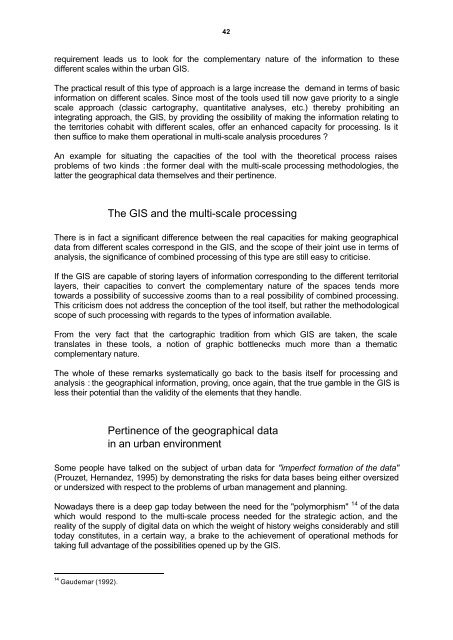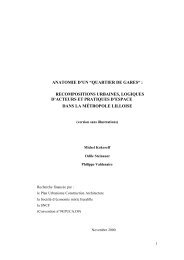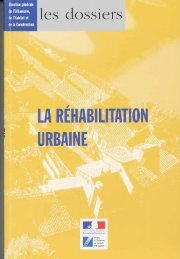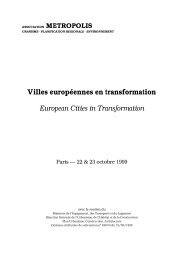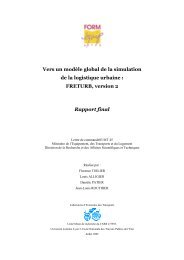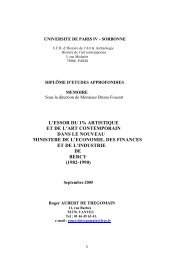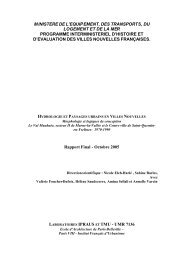Systèmes d'information géographique. Dossier ... - CiteSeerX
Systèmes d'information géographique. Dossier ... - CiteSeerX
Systèmes d'information géographique. Dossier ... - CiteSeerX
Create successful ePaper yourself
Turn your PDF publications into a flip-book with our unique Google optimized e-Paper software.
42<br />
requirement leads us to look for the complementary nature of the information to these<br />
different scales within the urban GIS.<br />
The practical result of this type of approach is a large increase the demand in terms of basic<br />
information on different scales. Since most of the tools used till now gave priority to a single<br />
scale approach (classic cartography, quantitative analyses, etc.) thereby prohibiting an<br />
integrating approach, the GIS, by providing the ossibility of making the information relating to<br />
the territories cohabit with different scales, offer an enhanced capacity for processing. Is it<br />
then suffice to make them operational in multi-scale analysis procedures ?<br />
An example for situating the capacities of the tool with the theoretical process raises<br />
problems of two kinds : the former deal with the multi-scale processing methodologies, the<br />
latter the geographical data themselves and their pertinence.<br />
The GIS and the multi-scale processing<br />
There is in fact a significant difference between the real capacities for making geographical<br />
data from different scales correspond in the GIS, and the scope of their joint use in terms of<br />
analysis, the significance of combined processing of this type are still easy to criticise.<br />
If the GIS are capable of storing layers of information corresponding to the different territorial<br />
layers, their capacities to convert the complementary nature of the spaces tends more<br />
towards a possibility of successive zooms than to a real possibility of combined processing.<br />
This criticism does not address the conception of the tool itself, but rather the methodological<br />
scope of such processing with regards to the types of information available.<br />
From the very fact that the cartographic tradition from which GIS are taken, the scale<br />
translates in these tools, a notion of graphic bottlenecks much more than a thematic<br />
complementary nature.<br />
The whole of these remarks systematically go back to the basis itself for processing and<br />
analysis : the geographical information, proving, once again, that the true gamble in the GIS is<br />
less their potential than the validity of the elements that they handle.<br />
Pertinence of the geographical data<br />
in an urban environment<br />
Some people have talked on the subject of urban data for "imperfect formation of the data"<br />
(Prouzet, Hernandez, 1995) by demonstrating the risks for data bases being either oversized<br />
or undersized with respect to the problems of urban management and planning.<br />
Nowadays there is a deep gap today between the need for the "polymorphism" 14 of the data<br />
which would respond to the multi-scale process needed for the strategic action, and the<br />
reality of the supply of digital data on which the weight of history weighs considerably and still<br />
today constitutes, in a certain way, a brake to the achievement of operational methods for<br />
taking full advantage of the possibilities opened up by the GIS.<br />
14 Gaudemar (1992).


